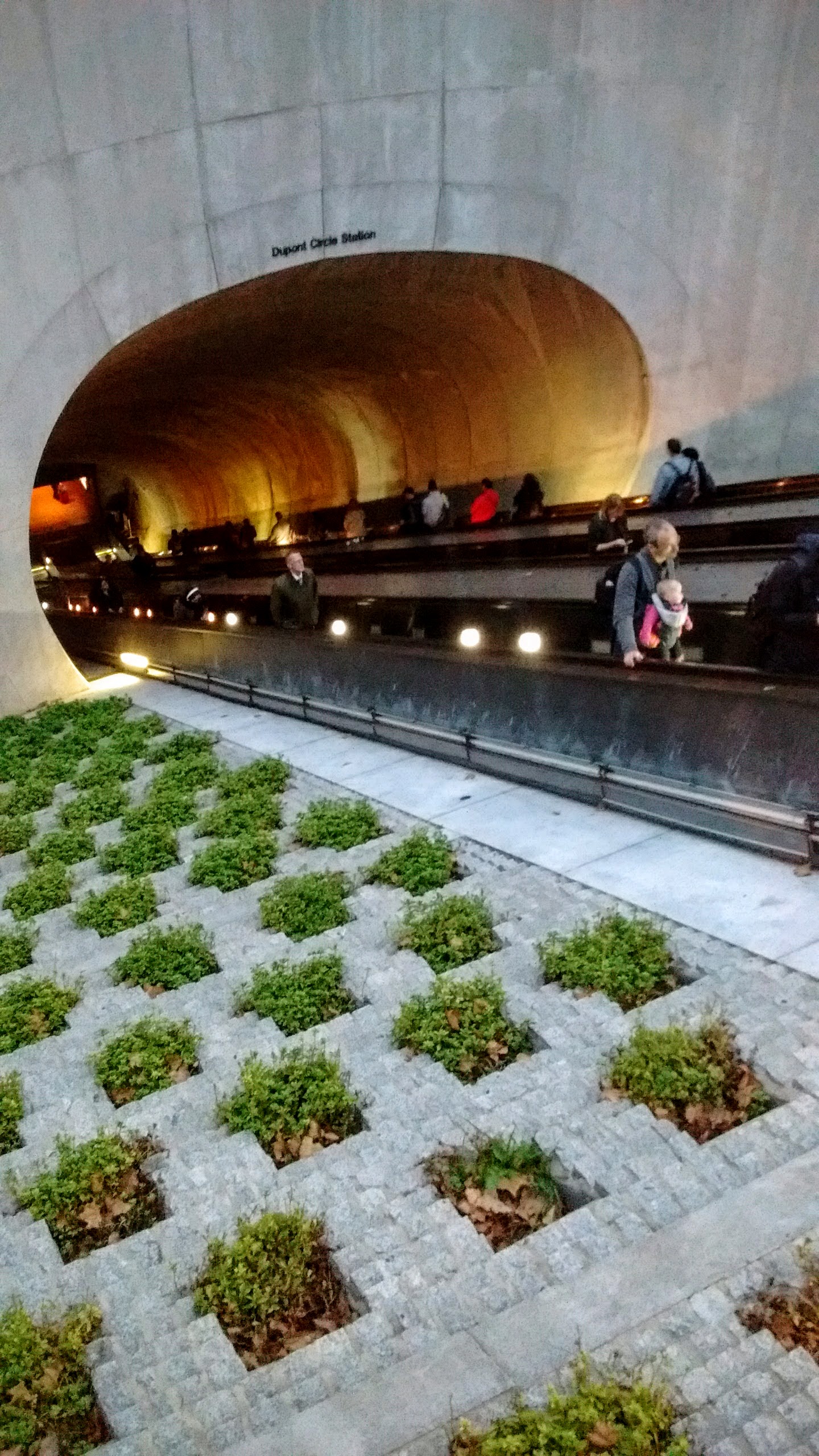I recently presented at the CitiesAlive: 14th Annual Green Roof & Wall Conference in Washington, DC (November 2nd, 2016). Here is the presentation.

Greening the DC Metro (Dupont Circle)
And here is the summary:
- Why do we under-invest in Green Infrastructure (GI)?
- As an economist, I think economics can help us answer this question. Economics is good at totting up the costs and enumerating the benefits of these investments.
- Economics brings the most value in determining the tough to value benefits: The health, productivity, and reduced absenteeism benefits of sustainable design; The value of cleaner air and water; The savings in traditional grey stormwater infrastructure; Reduction in urban heat island, etc.
- If it is in everyone’s best interest to invest in GI, why don’t we act in our best interest? How does and economist explain this conundrum?
- We count financial costs but not social and environmental benefits. The person who pays is not the one who benefits or incurs the costs.
- People think the environment, health and quality of life benefits cannot be quantified/monetized.
- Therefore, people think that making the business case is difficult and expensive.
- If you are a municipality, state or federal agency you maybe able to impose your will:
- Impose penalties
- Stormwater fees, incentives and fines that internalize the externalities.
- Mississauga has announced plans to implement a stormwater surcharge fee in 2016. Mississauga joins 19 other Canadian municipalities — and more than 1,500 across North America — that have introduced charges to help offset the cost of renewing stormwater infrastructure.
- DC Stormwater charge $3.27/gallon (can be offset by stormwater retention credits trading – see below – at ~ $2/gallon)
- Legislate, Guide
- EPA National Pollutant Discharge Elimination System (NPDES), MS4 Permits, tec.
- LID/GI guidelines, rules, suggestions e.g. Pima
- Green Roof policy
- Toronto – From February 1, 2010 – March 1, 2015, 260 green roofs have been created in Toronto, consisting of 196,000 sq m (2.1 million sq ft) of green roof area. A total of 444 green roofs exist in the City of Toronto. Implementation of green roofs in Toronto “would provide significant economic benefits to the City, particularly in the areas of stormwater management and reducing the urban heat island (and the energy use associated therewith).”
- We recently did an analysis of the financial, social and environmental benefits of installing living roofs on 50% of roof space for eligible buildings in SoMa, San Francisco. This analysis looks at the costs and benefits, over a 25 year study period, of adding living roofs covering 723,268 square feet (i.e., covering 50% of the roof space of 109 buildings), using the Sustainable Return on Investment (S-ROI) framework. The social and environmental value reflects the value of the increase in water quality, recreational value, shadow wage, and the benefit to decreased pollutants, carbon emissions, heat island effect, and flood risk. Contact me if you’d like more information.
- The value of a green roof video
- Provide incentives
- DC Stormwater Retention Credit Trading Program Properties generate Stormwater Retention Credits (SRCs) for voluntary green infrastructure that reduces stormwater runoff. Owners trade their SRCs in an open market to others who use them to meet regulatory requirements for retaining stormwater. Revenue creates incentives to install green infrastructure that protects rivers and provides other benefits.
- It can be done – what to demand of your economist or economic analysis software:
- Research is available, meta-analyses allow for risk analysis, stakeholder perspectives are possible.
- Costs and benefits can be quantified and monetized.
- Uncertainty in costs and benefits can be included.
- Stakeholder perspectives can be calculated (What’s in it for me?)
- It need not cost a lot to make the case for GI:
- Data is standardized, see for example TIGER, federal CBA guidance.
- Methodology was formalized over 100 years ago.
- Automation is possible.
- In conclusion, the barriers to implementing GI is that the benefits are not being valued but the true value can be estimated reliably.
- True value of green infrastructure is easy & cheap to compute.
- Economic value can inform legislation, incentives and fees.
- A compelling business case can be made.
0 Comments